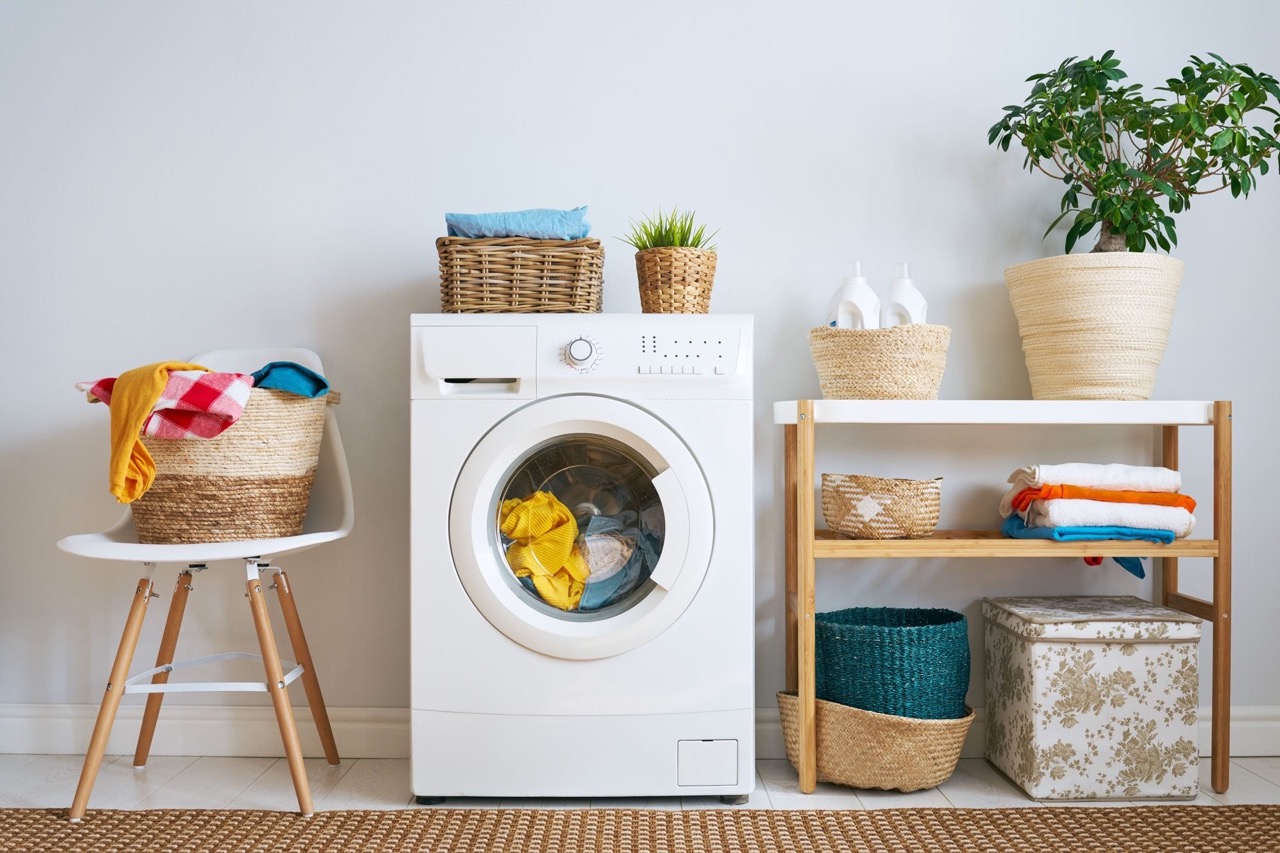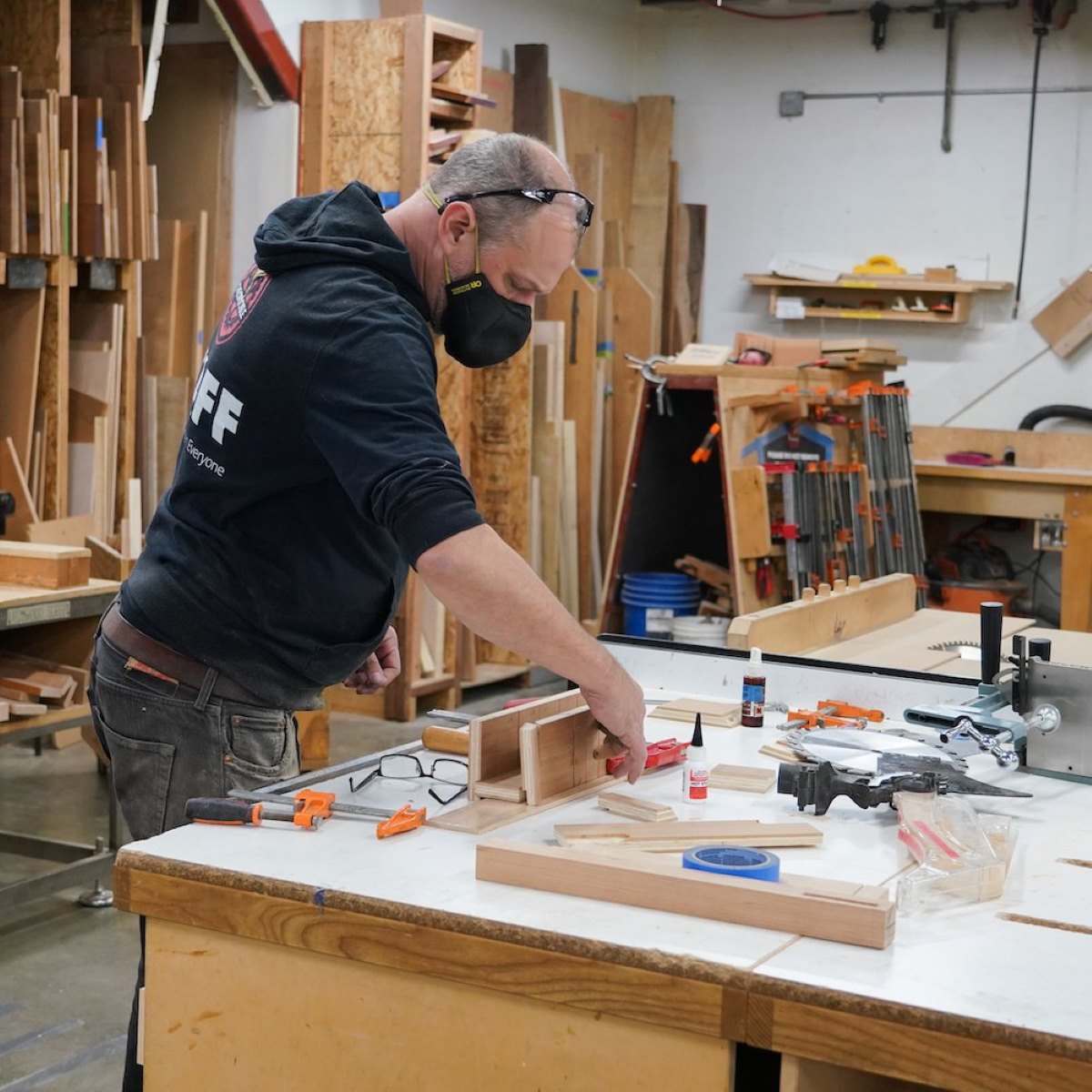Home>Articles>Learn These Firepit Safety Tips To Build A Bonfire The Right Way


Articles
Learn These Firepit Safety Tips To Build A Bonfire The Right Way
Modified: December 7, 2023
Learn important firepit safety tips and guidelines to build a bonfire safely and enjoy articles on firepit safety.
(Many of the links in this article redirect to a specific reviewed product. Your purchase of these products through affiliate links helps to generate commission for Storables.com, at no extra cost. Learn more)
Introduction
There’s something magical about gathering around a crackling bonfire on a cool evening. The warmth, the mesmerizing flames, and the sound of logs popping create an inviting ambiance that brings people together. However, building and enjoying a firepit requires more than just throwing some wood into a pit and lighting it up. Fire safety should always be a top priority to ensure that everyone stays safe and the environment remains unharmed.
In this article, we will explore essential firepit safety tips to help you build a bonfire the right way. By following these guidelines, you can enjoy the beauty and warmth of a fire while minimizing the risks associated with open flames.
Key Takeaways:
- Prioritize firepit safety by choosing the right location, clearing the area, and using a sturdy firepit to create a safe and enjoyable environment for bonfire gatherings.
- Never use accelerants, monitor the fire at all times, and properly extinguish the fire to ensure a safe and controlled bonfire experience while minimizing risks.
Read more: How To Make A Bed The Right Way?
Choose the Right Location
When selecting a location for your firepit, it’s crucial to choose wisely. You want to ensure that the area is safe and suitable for a bonfire. Here are a few factors to consider:
- Check local regulations: Before selecting a spot, familiarize yourself with any local laws or regulations regarding firepits. Some areas may have restrictions on fire size, location, or even prohibit open flames altogether. Make sure you comply with these regulations to avoid any legal issues.
- Keep a safe distance: Ensure that your firepit is placed at a safe distance from any structures, trees, or flammable objects. A minimum distance of 10 feet is usually recommended, but it may vary based on local regulations. The idea is to prevent the fire from spreading uncontrollably if it gets too large.
- Consider wind direction: Take note of the prevailing wind direction in your area. Position the firepit in a way that the wind blows the smoke away from where people will be sitting. This will prevent smoke from causing discomfort or health issues for your guests.
Choosing the right location is the first step in ensuring a safe and enjoyable experience around your firepit. By following these guidelines, you can create a comfortable and secure environment for everyone involved.
Clear the Area
Before igniting your bonfire, it’s essential to clear the area surrounding the firepit to minimize fire hazards. Here are some important steps to take:
- Remove flammable materials: Clear away any dry leaves, twigs, or other flammable materials from the immediate vicinity of the firepit. These can easily catch fire and contribute to the spread of flames.
- Tidy up nearby vegetation: Trim any overhanging branches or bushes that could potentially catch fire or obstruct the firepit. Maintaining a clear space can help prevent accidents and ensure the fire remains contained.
- Keep a safe distance: Ensure that there is ample space between the firepit and any outdoor furniture, umbrellas, or other combustible materials. This will prevent accidental contact with the fire and reduce the risk of items catching fire.
Clearing the area around your firepit is an important precautionary measure to prevent unintended fires and keep everyone safe. Take the time to remove any potential fire hazards before starting your bonfire.
Use a Sturdy Firepit
When it comes to firepit safety, using a sturdy and well-constructed firepit is crucial. Here’s why it matters:
- Prevents spreading of fire: A solidly built firepit helps contain the flames, preventing them from spreading beyond the designated area. Look for firepits made of durable materials like brick, stone, or metal that can withstand the heat and keep the fire contained.
- Ensures stability: Stability is key when selecting a firepit. Choose one that is wide and heavy enough to prevent tipping over, even if accidentally bumped. This will minimize the risk of hot embers or burning logs falling out of the firepit, reducing the chance of injuries or accidental fires.
- Proper ventilation: Adequate ventilation in a firepit allows for proper airflow, aiding in the combustion process and reducing the buildup of smoke. Look for firepits with designed ventilation holes or gaps that allow for efficient burning.
Using a sturdy firepit not only ensures safety but also enhances the overall experience of sitting around a fire. Invest in a high-quality firepit that meets your specific needs and provides peace of mind while enjoying the warmth and beauty of an open fire.
Check for Fire Regulations
Before starting a bonfire or using a firepit, it’s essential to familiarize yourself with the local fire regulations. Different areas may have specific rules and guidelines regarding open flames. Here’s what you need to know:
- Check with local authorities: Contact your local fire department or municipality to inquire about any fire regulations or permits required in your area. They can provide you with specific information regarding fire size, location, and any restrictions or permits needed.
- Follow public fire restrictions: In some regions, there may be temporary restrictions on open fires due to drought, fire danger, or other environmental conditions. Stay updated with any public fire restrictions or bans to ensure compliance and avoid penalties.
- Respect neighboring properties: Be mindful of your neighbors and how the smoke and noise from your fire may impact them. Consider the distance between your firepit and neighboring homes and make sure to keep the fire contained and the smoke minimized.
By checking and adhering to fire regulations, you can enjoy your firepit responsibly and avoid any potential legal issues. It’s important to prioritize safety and respect the rules set in place to protect your community.
Read more: How To Learn Plumbing
Build a Proper Base
Creating a proper base for your firepit is essential for fire safety and optimal burning conditions. Here’s how to build a sturdy and effective base:
- Choose a non-flammable surface: Select a location for your firepit that is on a non-combustible surface, such as concrete or gravel. Avoid placing the firepit directly on grass or wooden surfaces, as these can catch fire easily.
- Create a fire-resistant barrier: Surround the firepit with a fire-resistant barrier to prevent the flames from spreading. This can be achieved by using firebricks or heat-resistant pavers to create a protective ring around the firepit.
- Clear the area: Remove any debris, grass, or flammable materials within the firepit area. This will help ensure a clean, safe burning environment and minimize the risk of unwanted fires.
- Add a layer of sand or gravel: Place a layer of sand or gravel at the bottom of the firepit. This acts as an additional heat barrier and helps with drainage, preventing the base from becoming waterlogged when it rains.
By building a proper base for your firepit, you create a stable and safe environment for your bonfire. This helps to minimize the risk of fire spreading and provides an optimal foundation for a controlled and enjoyable fire experience.
Properly Ignite the Fire
Properly igniting the fire in your firepit is not only important for a successful bonfire but also for safety. Follow these steps to ensure a safe and effective ignition:
- Use dry firewood: Use dry firewood that has been properly seasoned. Wet or green wood can create excess smoke and cause the fire to smolder instead of burn. Dry wood will ignite more easily and produce a cleaner, hotter flame.
- Arrange the wood properly: Stack the firewood in a well-ventilated manner, allowing air to circulate and promote effective burning. Start with a smaller stack and gradually add more wood as the fire grows.
- Use kindling or fire starters: Place kindling, such as small twigs or newspaper, at the bottom of the firepit. This provides a quick and easy way to ignite the fire. You can also use commercial fire starters to help get the flames going.
- Use a long-handled lighter or matches: When igniting the fire, use a long-handled lighter or matches to keep your hands a safe distance away from the flames. Avoid using gasoline or other accelerants, as these can be extremely hazardous.
- Apply the “top-down” method: For a longer-lasting fire, consider using the “top-down” method, where you place larger logs at the bottom, followed by smaller logs and kindling on top. This allows the fire to burn from the top down, creating a more controlled and efficient burn.
By properly igniting the fire, you minimize the risk of accidents and create a safe environment for enjoying your bonfire. Remember to always exercise caution and be mindful of the flames and heat throughout the ignition process.
Always have a bucket of water or a hose nearby when building a firepit. This will allow you to quickly extinguish any unexpected flare-ups or embers.
Monitor the Fire at all Times
Once the fire is lit, it’s crucial to continuously monitor it for the duration of your bonfire. Here’s why it’s important to keep a close eye on the flames:
- Ensure safety: By monitoring the fire, you can promptly respond to any potential hazards, such as flying embers or logs rolling out of the firepit. This allows you to take immediate action and prevent accidents or injuries.
- Control the fire’s size: Keeping an eye on the fire allows you to adjust its size as needed. Add more wood to increase the flames, or dampen the fire by reducing the amount of wood if it becomes too large or intense. This level of control ensures a safe and enjoyable experience.
- Prevent unattended fires: Leaving a fire unattended is extremely dangerous and can quickly lead to uncontrollable flames. By monitoring the fire at all times, you can ensure that it remains contained and prevent any unexpected spreading.
As the host of the bonfire, it is your responsibility to keep a watchful eye on the fire. Stay attentive, have a fire extinguisher or water source nearby, and establish clear rules to avoid any mishaps. By doing so, you can enjoy your bonfire while keeping everyone safe and secure.
Keep a Safe Distance
When enjoying a bonfire, it’s important to maintain a safe distance to ensure the well-being of everyone involved. Here’s why keeping a safe distance is crucial:
- Avoid burns and injuries: The heat produced by a fire can cause severe burns if you get too close. By keeping a safe distance, you reduce the risk of accidental contact with the flames or any hot objects.
- Prevent clothing or hair from catching fire: Fire can be unpredictable, and embers or sparks can fly out of the firepit. By staying at a safe distance, you reduce the chances of your clothing or hair catching fire.
- Create a comfortable and enjoyable atmosphere: Sitting too close to the fire can make it uncomfortable due to excessive heat. By maintaining a reasonable distance, you can enjoy the warmth of the fire without feeling overwhelmed by the heat.
It’s recommended to keep a distance of at least 3-4 feet from the firepit. However, this may vary depending on the size of the fire and how it is contained. Use your judgment and ensure everyone understands and follows the rules for maintaining a safe distance.
By keeping a safe distance, you can enjoy your bonfire while minimizing the risk of burns, injuries, or accidental contact with the flames. Remember, safety should always be a top priority when gathered around a firepit.
Never Use Accelerants
When it comes to building a bonfire, it’s important to never use accelerants to ignite or fuel the fire. Accelerants are substances such as gasoline, kerosene, or lighter fluid that are highly flammable and can lead to dangerous situations. Here’s why it’s crucial to avoid using accelerants:
- Risk of uncontrollable flames: Accelerants can cause the fire to ignite quickly and unpredictably, leading to larger and more intense flames. This increases the risk of losing control over the fire, which can result in accidents or injuries.
- Explosions and injuries: Accelerants are extremely volatile substances that can cause explosions if mishandled or ignited improperly. The force of an explosion can cause serious injuries to those nearby, and the resulting flames can spread rapidly.
- Environmental damage: Using accelerants not only poses a risk to your safety but also causes harm to the environment. The chemicals released during the combustion of accelerants can contaminate the air, water, and soil, leading to environmental pollution.
- Legal consequences: In many areas, using accelerants to start fires is illegal. Violating these regulations can result in fines, penalties, or even criminal charges. It’s important to respect and abide by the laws governing fire safety in your location.
Instead of using accelerants, opt for safer alternatives such as kindling, dry firewood, or commercially available fire starters. These methods provide a safe and controlled way to ignite the fire without the risks associated with accelerants.
By avoiding accelerants, you prioritize the safety of yourself, those around you, and the environment. Always exercise caution and make responsible decisions when it comes to fueling and igniting your bonfire.
Extinguishing the Fire Correctly
Properly extinguishing the fire in your firepit is just as important as safely starting it. Follow these steps to ensure a thorough and safe extinguishment:
- Allow the fire to burn down: Let the fire burn down naturally until only glowing embers remain. Avoid adding additional wood or fuel at this stage to prevent the fire from growing stronger.
- Remove unburned materials: Carefully remove any unburned logs or debris from the firepit using fireplace tools or heat-resistant gloves. This will help prevent any potential reignition or sparks that could ignite nearby flammable materials.
- Douse the fire with water: Slowly pour water over the remaining embers, making sure to thoroughly saturate the firepit and any surrounding ashes. Stir the embers and ashes with a long stick to ensure all hot spots are cooled and extinguished.
- Repeat the water application: Continue applying water and stirring until you are confident that the fire is completely out and there are no remaining hot embers. This step is crucial to prevent any potential rekindling of the fire.
- Feel for heat: Use the back of your hand to feel for any remaining heat around the firepit. If you feel any warmth, continue to add water and stir until the area is cool to the touch.
Remember, never leave a fire unattended until you are absolutely certain it is fully extinguished. Even smoldering embers can reignite and spark a fire if left unattended.
Properly extinguishing the fire ensures that there are no lingering flames or heat that can pose a danger. By following these steps, you can safely enjoy your bonfire and have peace of mind knowing that you’ve taken the necessary precautions to prevent any potential fire hazards.
Dispose of Ashes Safely
Proper disposal of ashes is an essential step in firepit safety. Even after the fire has been extinguished, hot coals and ashes can remain hidden and pose a fire risk. Follow these guidelines to dispose of ashes safely:
- Allow ashes to cool: Before handling ashes, make sure they have had enough time to cool down completely. Depending on the size and intensity of the fire, this can take several hours or even overnight.
- Use a metal container: Once the ashes have cooled, transfer them to a metal container specifically designated for ash disposal. Metal containers are ideal because they are non-combustible and can safely contain any remaining heat.
- Avoid plastic or combustible containers: Never dispose of ashes in combustible containers, such as plastic bags or cardboard boxes. Even if the ashes appear cool, they can still contain hot embers that can ignite these materials.
- Keep the container outside: Place the metal container outdoors on a noncombustible surface, away from any flammable materials or structures. Avoid placing it near wooden fences, buildings, or anything that can catch fire easily.
- Keep the container covered: Use a tight-fitting lid or cover for the metal container to prevent any wind from blowing ashes out and starting a fire. Securing the lid also helps to keep moisture out, which can cause the ashes to smolder and potentially start a fire.
- Monitor the ashes: Even though the ashes are in a metal container, continue to monitor them for a few days to ensure they remain cool and pose no fire risk. Be cautious and take necessary measures to prevent any accidents.
Properly disposing of ashes reduces the risk of accidental fires and ensures the safety of your surroundings. By following these guidelines, you can minimize the potential for rekindling or spreading of fire after the bonfire has ended.
Conclusion
Building a bonfire and enjoying the warmth and beauty of an open firepit can be a wonderful experience. However, it is crucial to prioritize firepit safety to ensure the well-being of everyone involved and to protect the environment. By following the firepit safety tips outlined in this article, you can create a safe and enjoyable environment for your bonfire gatherings.
Selecting the right location, clearing the area, and using a sturdy firepit are essential steps in firepit safety. Additionally, staying informed about fire regulations and building a proper base provide a solid foundation for a safe firepit experience. Properly igniting the fire, closely monitoring it at all times, and keeping a safe distance help prevent accidents and injuries.
Remember to never use accelerants when starting the fire, as these can lead to uncontrollable flames and hazardous situations. And once the bonfire is over, it’s crucial to properly extinguish the fire, dispose of ashes safely, and continue monitoring the area for any remaining heat or fire hazards.
By incorporating these firepit safety tips into your bonfire routine, you can enjoy the pleasures of an open fire while minimizing risks and maintaining a safe environment. So gather your loved ones, create lasting memories, and have peace of mind knowing that you are practicing responsible firepit safety.
Frequently Asked Questions about Learn These Firepit Safety Tips To Build A Bonfire The Right Way
Was this page helpful?
At Storables.com, we guarantee accurate and reliable information. Our content, validated by Expert Board Contributors, is crafted following stringent Editorial Policies. We're committed to providing you with well-researched, expert-backed insights for all your informational needs.














0 thoughts on “Learn These Firepit Safety Tips To Build A Bonfire The Right Way”